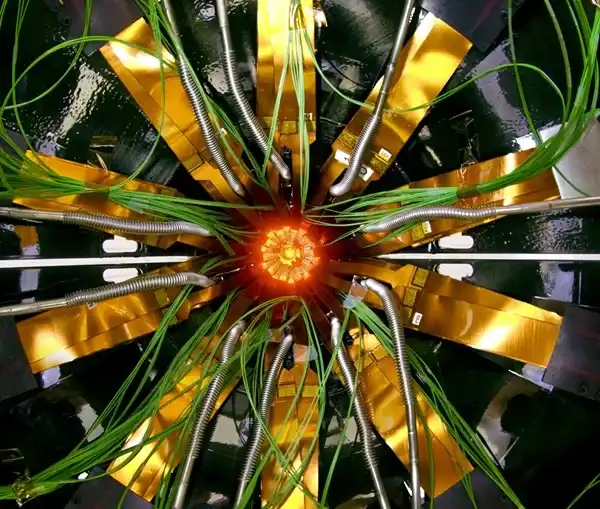When we think about temperature, we often consider how hot or cold something is. We know that absolute zero, approximately -273.15°C, is the coldest possible temperature, where particles have minimal motion. But have you ever wondered if there’s a limit to how hot things can get? Let’s explore this fascinating concept in a way that’s easy to understand.

Understanding Temperature
Temperature measures the amount of energy the particles in a substance have. When you heat something, its particles move faster, increasing the temperature. For example, heating water makes its molecules move more rapidly, turning it from liquid to gas when it boils.

The Hottest Places We Know
The highest air temperature ever recorded on Earth was 56.7°C in Death Valley, California, in 1913. However, this record is debated, and some suggest that a temperature of 54.0°C recorded in 2013 in the same location might be more reliable.

In the universe, temperatures can soar much higher. Stars like our Sun have core temperatures around 15 million degrees Celsius. Events like supernovae, which are massive star explosions, can reach temperatures of billions of degrees.

Is There a Maximum Temperature?
Scientists believe there is an upper limit to temperature, known as the Planck temperature. This is approximately 1.416808 × 10³² Kelvin, an incredibly large number—about 100 million trillion trillion degrees Celsius!

What Happens at the Planck Temperature?
At temperatures approaching the Planck temperature, the laws of physics start to break down. Particles would have so much energy that the forces we understand, like gravity and electromagnetism, would need to be combined into a unified theory, which scientists are still working on. It’s believed that such extreme temperatures existed just moments after the Big Bang, the event that started our universe.

Why Can’t We Reach the Planck Temperature?
Creating or observing temperatures near the Planck temperature is beyond our current technological capabilities. Even in particle accelerators, where particles are smashed together at high speeds to study fundamental physics, we can only achieve temperatures of trillions of degrees, far below the Planck temperature.

Conclusion
While absolute zero represents the lowest limit of temperature, the Planck temperature is considered the highest possible temperature. It’s a boundary where our current understanding of physics no longer applies, and new theories are needed to explain the phenomena that occur. Exploring these extremes helps scientists learn more about the fundamental nature of our universe.
For more interesting articles, please visit www.kidzherald.com





